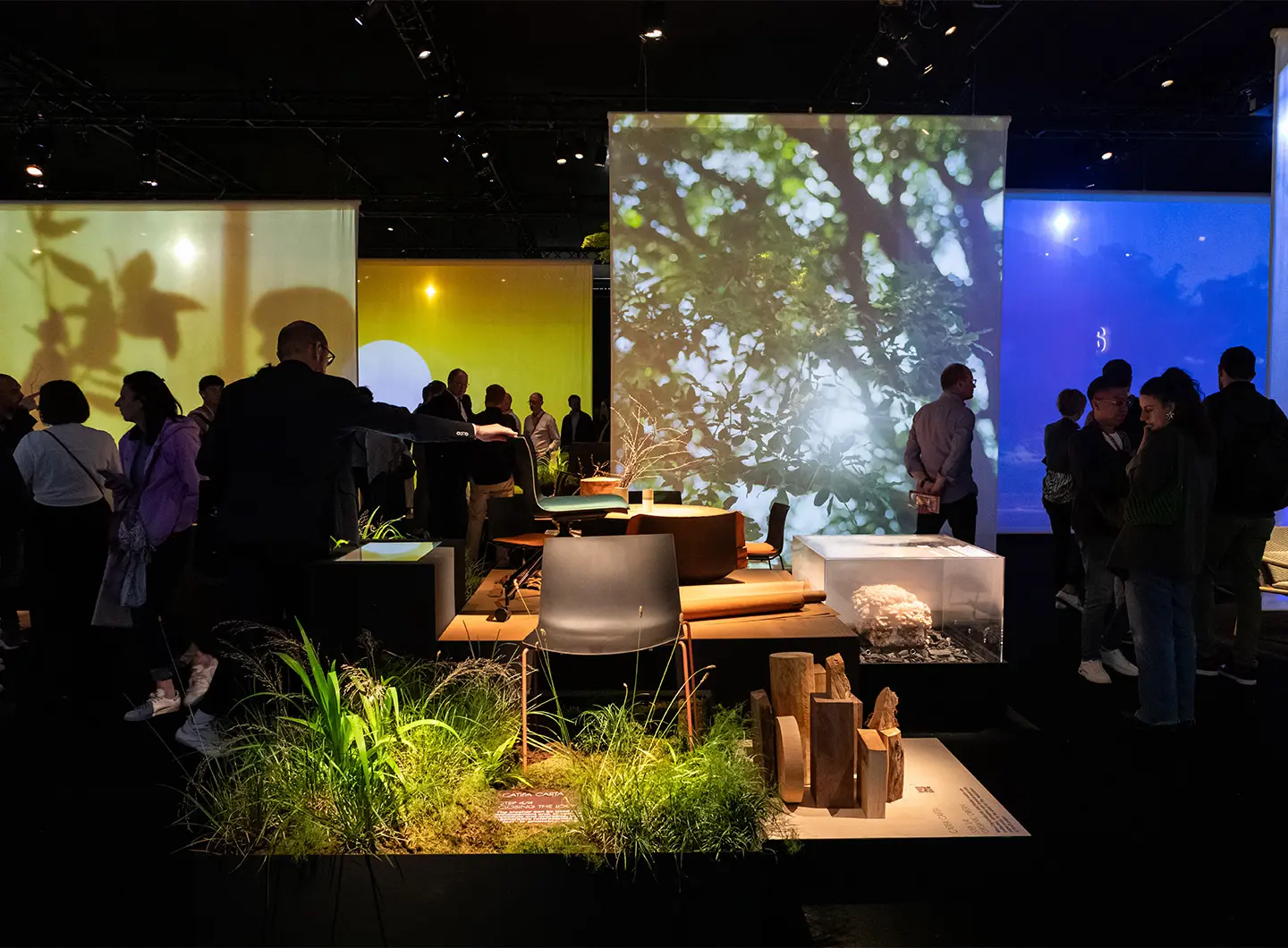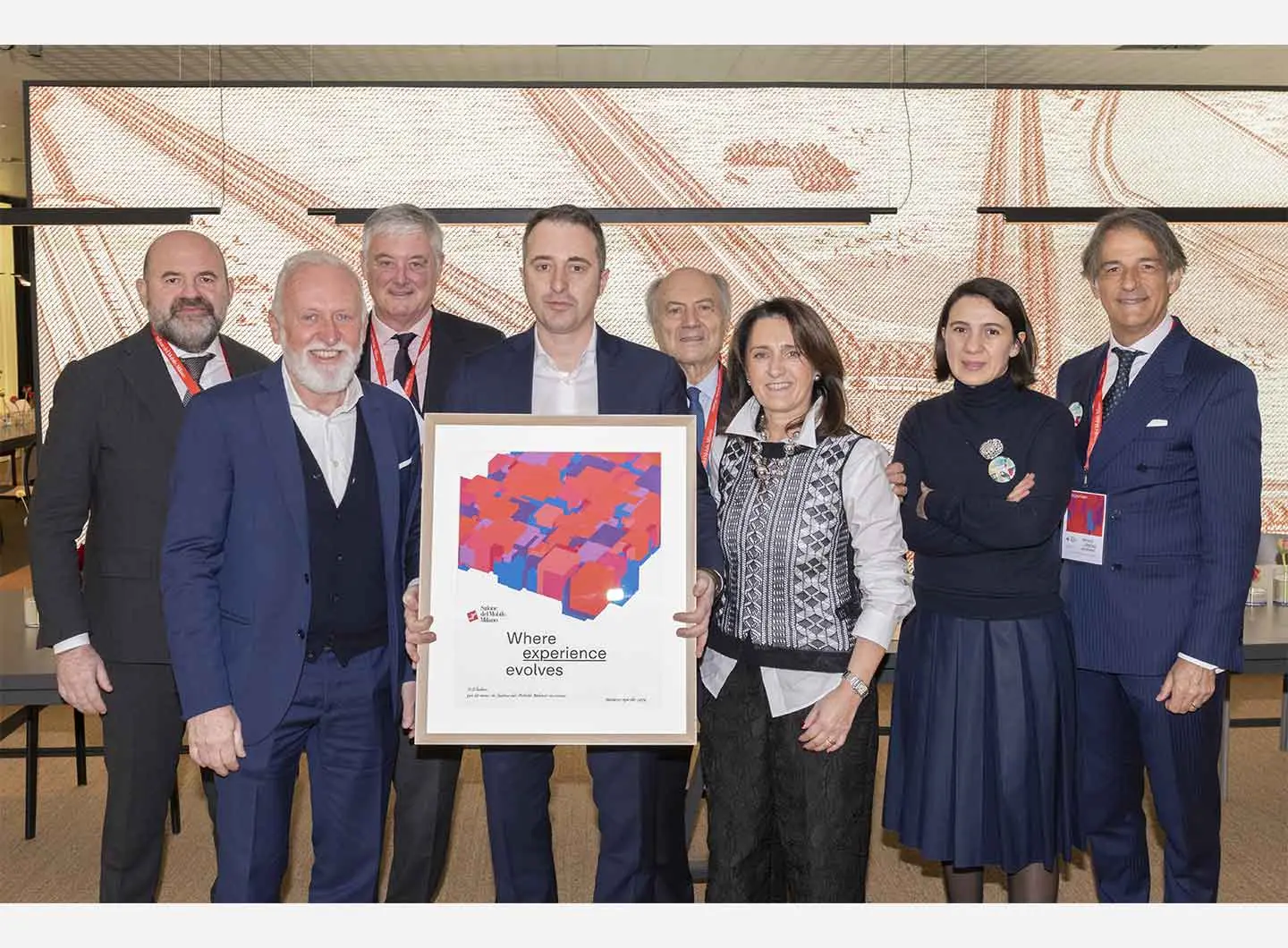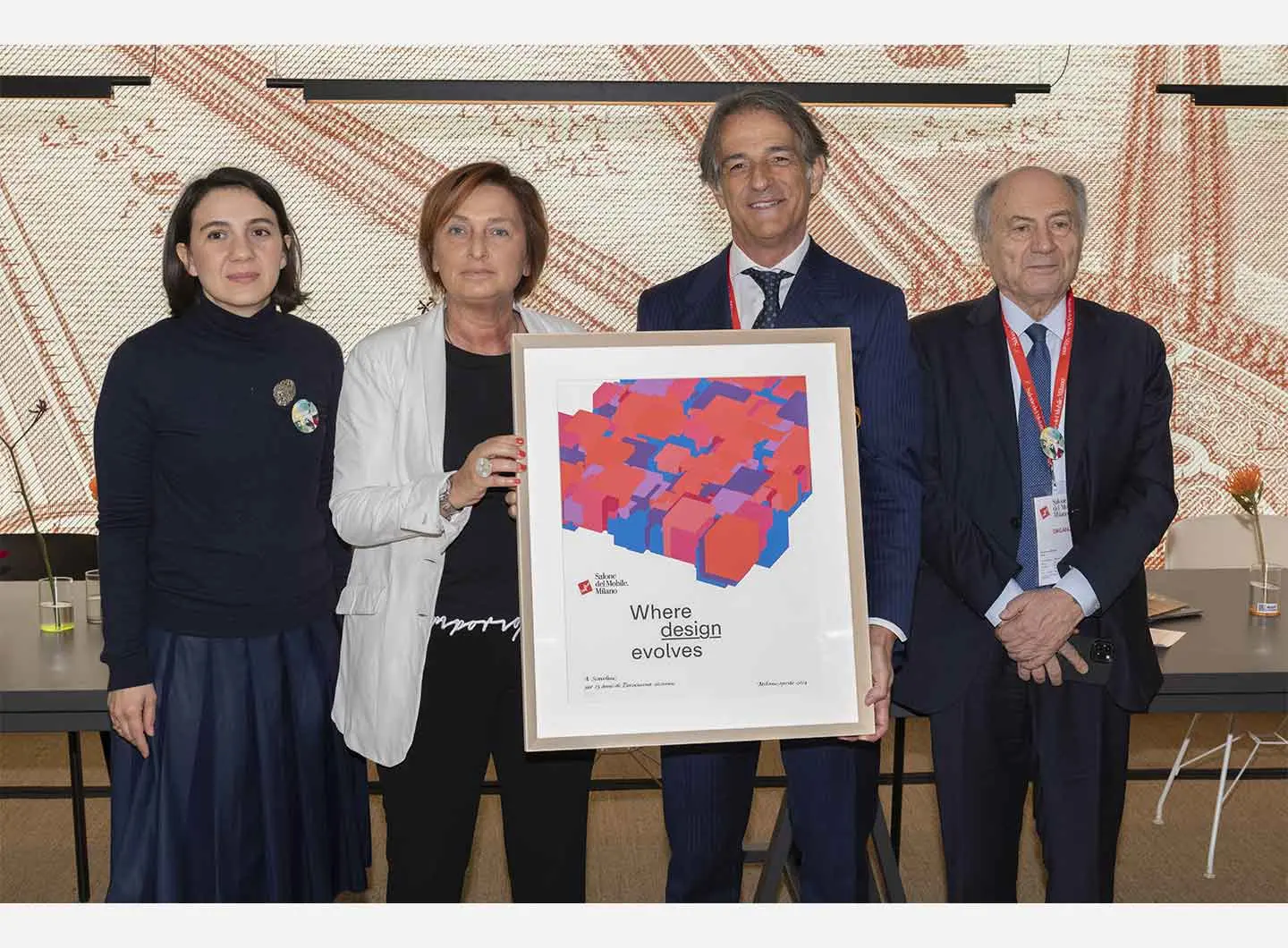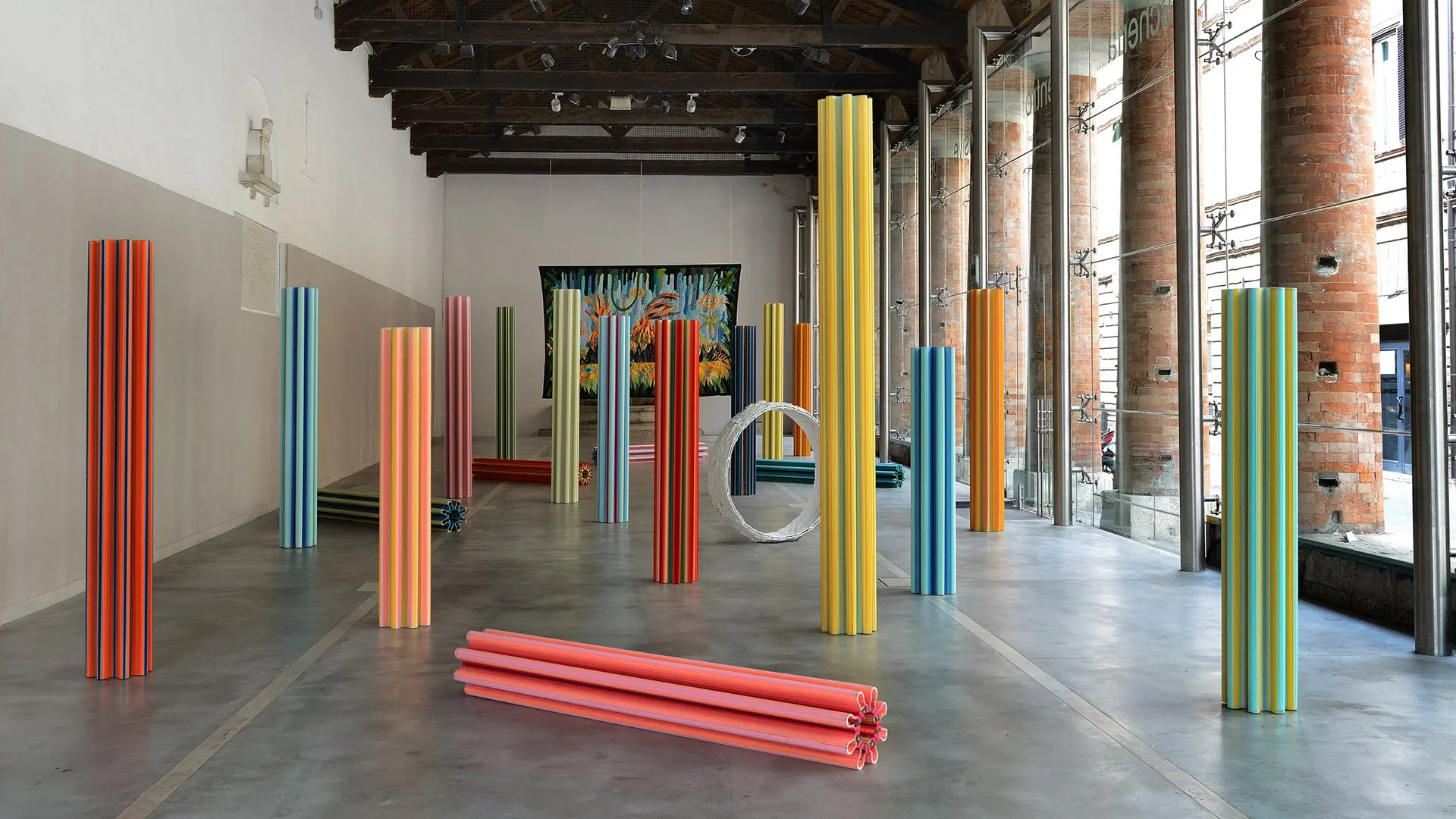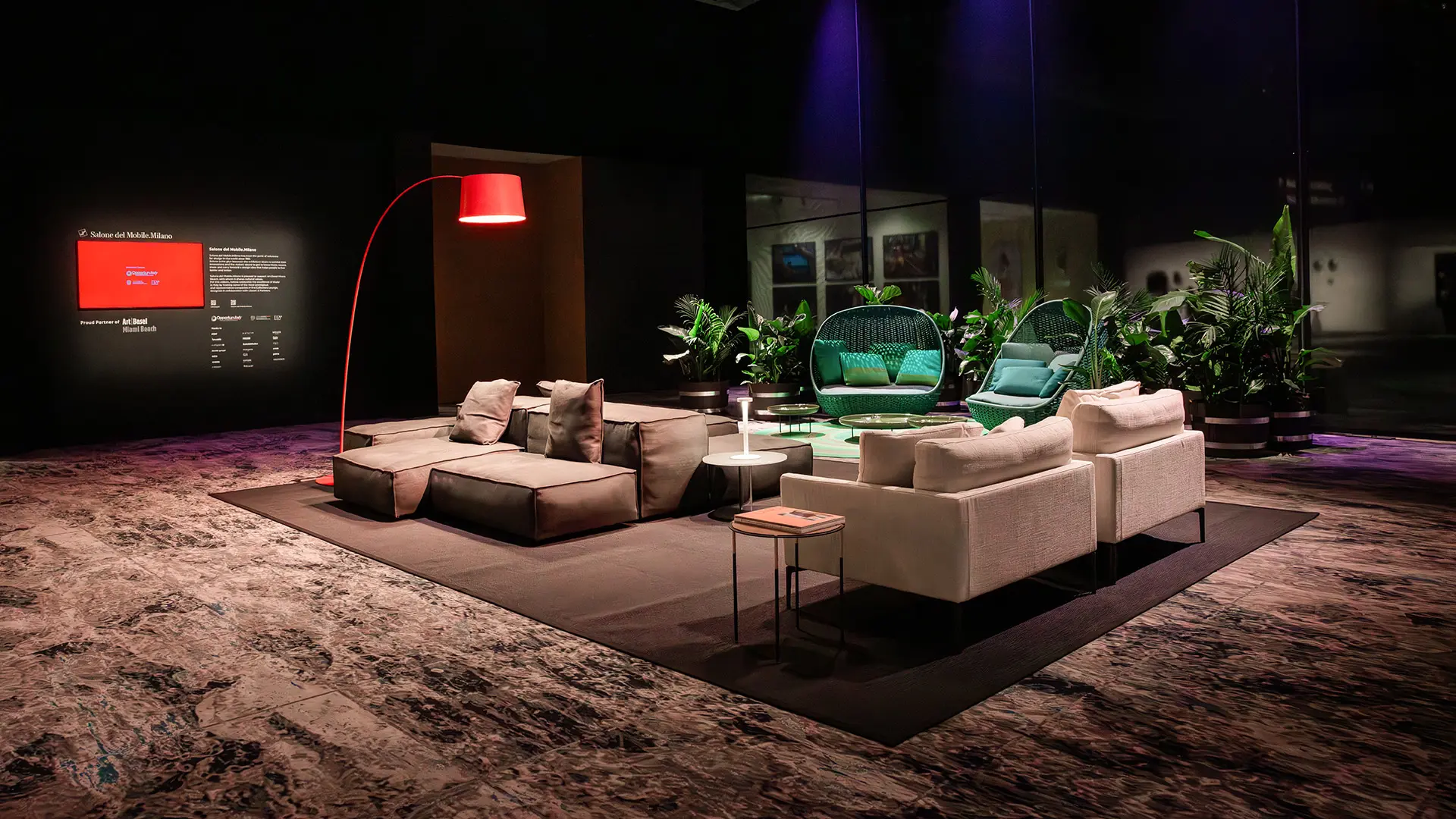They are all Italian and all in some way draw on the theme of memory. This is true even when they deal with current sporting events associated with the imminent inauguration of the Winter Olympics. There are ten of them and for the most part they are held in the most reserved cultural circuits, outside the mainstream. It’s even better when they’re out of town, bringing historic residences to life with gleams and flashes of good design
The office of the future at the Salone del Mobile.Milano 2024

Mara - Ph. Ruggiero Scardigno
The distinction between office design and home design is disappearing. Because any place, today, can become a workspace, preferably with the comfort and warmth of a home
The office of the future is increasingly looking like the home, and vice versa. This is what we learned from the companies we met among the Workplace stands at the 62nd edition of the Salone del Mobile.Milano. What they have in common is unmistakable: a company’s label for the office world is becoming ever less binding. And with good reason: because there is a growing range of offerings that certainly continue to look at the traditional nine-to-five world, but at the same time they are designed to blend in with other living spaces, from the contract sector, such as waiting rooms or hospitality venues, to the home itself.
Increasingly human-centric, in terms of both ergonomics and the evocation of a welcoming atmospheric feeling, design for workplaces is first and foremost intended to be warm and inspired. Playfulness is the key to fostering positivity and collaboration through design. In a world where work is becoming more horizontal and the value of the result, Generation Z tells us has gone beyond the idea of sacrifice and constraint, motivation and participation have become goals to which design can also contribute through informal furnishings and warm palettes.
Putting aside the force of habit, which ties us to the same desk day after day, the world of design is engaging with a spectrum of varied needs and functions, while favoring the utmost adaptability of solutions. Open-plan projects are still popular, but they are no longer just huge rooms where desks can be arranged without hierarchies. Unlike what happened a couple of decades ago, the new version has integrated partition walls that cadence the space, making it more articulated. Teamwork has also become flexible, and can have as its center of gravity both the classic meeting table – now ready to incorporate technology that is ubiquitous but retractable – and informal work areas, accommodating working parties that can expand or shrink depending on the tasks assigned. My workspace today will be taken by or assigned to someone else tomorrow. So it’s better to provide general containers where archives and documents can be dealt with. Privacy is also modulated according to need: not necessary in the case of brainstorming, but guaranteed in the sound-proof intimacy of a cubicle when confidentiality is essential.
Wandering around the stands, we see the proposals from companies supporting this change. Anticipating this desire for hospitality and well-being for all with forward-looking solutions. For Fantoni, the office takes on the guise of a veritable “third space”. Among the innovations at this Salone, the Osoppo-based brand is offering Panorama, an accessorized wall, designed by Ben van Berkel of UNStudio, which can be used to shape twenty different configurations, so ensuring the maximum adaptability both in the space with which it has to engage, and the working methods of the individual teams. Among Martex’s latest proposals, on the other hand, we find integrated solutions that are particularly well suited to the needs of coworking. Within the Nucleo collection, designed by Studio Monica Graffeo, there is, for example, Nucleo Pantry and Nucleo Corner, respectively furniture for coffee breaks equipped with a fridge space adapted to both a breakout area and meeting rooms, and a kitchen counter to be combined with separating panels.
Under the artistic direction of Elisa Ossino, Dieffebi makes Playful Lifestyle a keystone to lighting up collective and office spaces with a positive and energizing touch of color. The company’s top-of-range proposal presented in the spaces of the Salone looks at the Line Bookcase, which through the articulation of solids and voids enables it to interpret both a storage unit and a partition equipped with acoustic panels as required.
There is no shortage of new furnishing proposals to give substance to the desire for novelty characteristic of every Salone del Mobile.Milano. Mara has made the beauty of the glitch, the unexpected error in the jargon of electronics, the showpiece of one of its new top-end products: from the collaboration with AMDL Circle comes Typo, a chair that stands out by the unexpected folds of the steel profile supporting the wooden backrest. Still on the theme of playfulness, Infiniti presents the extension of the Round&Round collection, designed by Oleg Pugachev. The Round&Roll stool on casters and with a storage base, an emblem of the informal style, is designed to accommodate the spontaneity of the body’s movements, allowing both the feet to move in space and the pelvis to turn thanks to the optional swivel seat. A brand that has evolved towards full integration between office design, living-room design and design lighting, Quadrifoglio Group is present at the Salone del Mobile.Milano with some new products in the world of seating, such as the Clizia chair and the After sofa, both designed by Edi & Paolo Ciani. Thanks to their soft linearity, both items favor multiple modes of insertion in exemplary ways.
Historic products in the firms’ catalogues have also been renewed to create new and sustainable solutions. Arper presents the new look of Catifa 53, one of its most enduring bestsellers. The brand’s first product to have acquired environmental certification, Catifa has now become carbon negative thanks to the use of PaperShell, a new material that at the end of its life can be reduced to biochar, a vegetable charcoal that retains CO2 from the previous stages of its life, and becomes a substrate to favor soil fertility.
The world of finishes at S.Project is also enriched with options that expand the expressive potential of workspaces, whatever they may be. At the fair Alpi presented the result of its new collaborations with GamFratesi (Alpi Wooclé and Alpi Peacock), Konstantin Grcic (Alpi Tramonto) and Piero Lissoni (Alpi North Light), which look respectively at the three-dimensional potential of textures, the iridescent rendering of sunset tones, and the relaxing horizon of Nordic spaces. While Door, a Marche-based company specializing in fabric partition walls, is bringing back a type of mobile threshold that, after the experiments in the Sixties – think of Gio Ponti and Joe Colombo – is revealing new applications and new colors, as we observed in the stand designed by Calvi Brambilla.
The Salone del Mobile.Milano is also an opportunity to recognize the value of innovation exercised in continuity, as attested by the awards for the event’s historic exhibitors. A symbol of Made in Italy and a standard-bearer of Italy in the world, eight brands received recognition for their “platinum weddings”, the 60 years spent by these exhibitors among the pavilions at the Fair: Angelo Monzio Compagnoni, Clei, Desalto, Elledue, Fratelli Boffi, Kartell, Rho, Tomasella Industria Mobili and Tonon & C. The Mobilificio SanGiacomo and Pol 74 received accolades for their 50 years at the Fair, while for their 40 years, awards were presented to Cantori, Casprini Gruppo Industriale, Segis and Vaccari Cav. Giovanni. For their 30 years Sitap and IL Loft. Finally, in recognition of their “silver anniversary”, with 25 years of continuous participation in the Salone, the brands EuroCucina, Scavolini, Snaidero Rino and Poliform were honored.


 Exhibitions
Exhibitions


